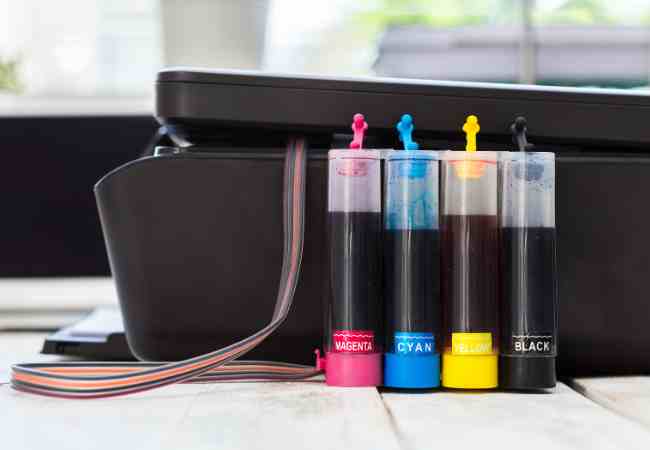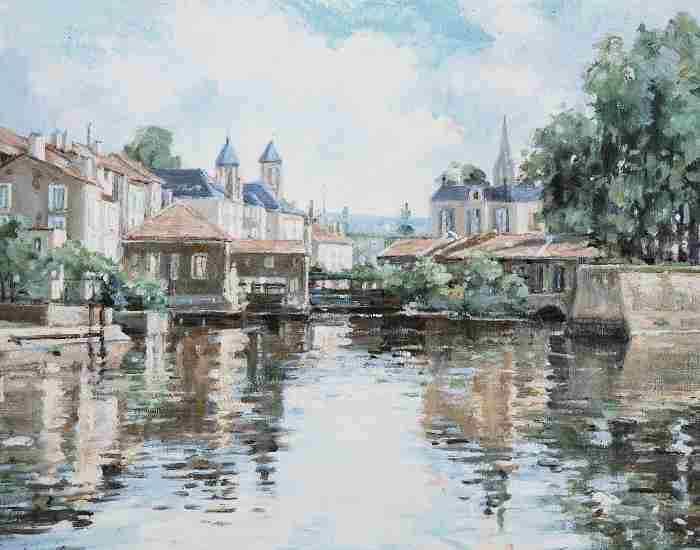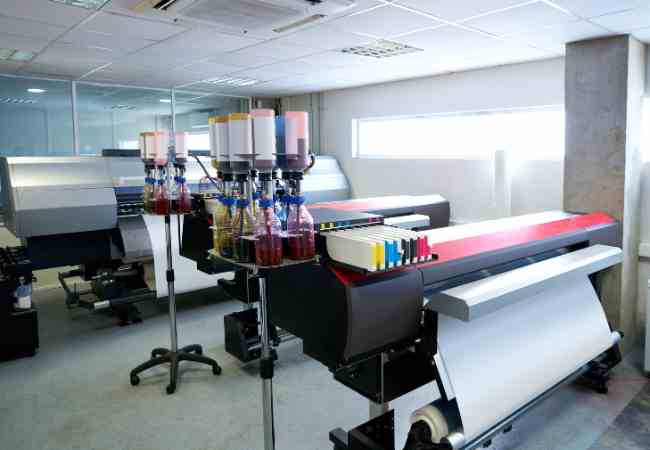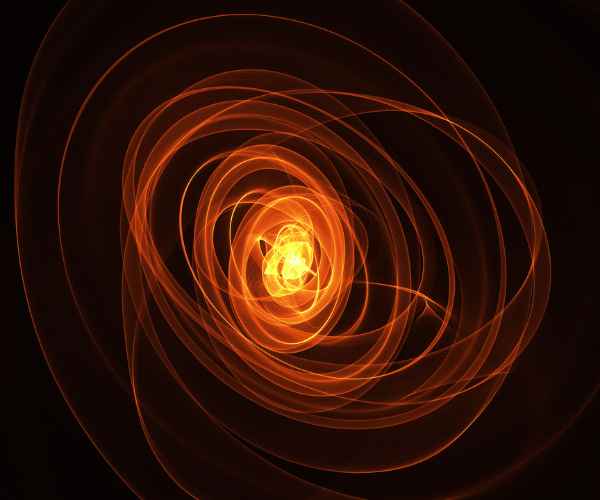When I started to use a more advanced scanner to scan my detailed pencil drawings, the changes were quite dramatic. In the past, my digital renders were quite flat and lacked the finesse of even the most basic tonal variations of my original drawings. Amazingly, however, ever since I got my hands on the Epson Perfection V600, the quality and resolution completely changed my art work as it captured all the essence and fine details just like the paper.
This experience illustrates the necessity of properly selecting the scanner. Scanners are one of the most crucial elements in presenting a digital portfolio for artists, photographers and designers. In this post, I will try to discuss other important aspects such as features and sales points of some famous scanners like the Epson Perfection V600 or the Canon CanoScan LiDE betters the chances of that faith by producing images of the highest possible quality while fully respecting the artwork.

What Makes a Scanner Great for Artwork?
For every artist who is ready to convert their works into a digital form, this is essential to know the best format of the scanning, because, it will allow for the best final outcome of such a conversion. Therefore the most important aspect of effective reproduction is the insight into the specific features, which most significantly affect the overall quality of the digital images of the artworks.
Essential Features for Artwork Scanners
Owing to the above statement, color and optical resolution are critical. Dots per inch (DPI) is a type of optical resolution standard that defines the resolution of the artwork that will be duplicated. A perfect example of this is the Epson Perfection V600, which has an optical resolution of 6400 DPI. In art reproduction, a DPI of 2400 or greater is advocated because any smaller size may result in the loss of finer details, according to findings from the Rochester Institute of Technology.
In line with that, color consistency must be ensured. A scanner must be able to copy the original object’s colors that it aims to reprint, without any shifting in color or saturation issues. Canon makes an effort to address these issues with the CanoScan LiDE. The three-color LED light source, used in its more advanced models, makes a significant and valuable claim of a colored image without distortion. This is further supported by several color science comparison studies that indicate, this technology is beneficial in preserving the true colors of the art pieces.
Scan quality consists of three major aspects the two above features and factors such as dynamic range which is the scanner’s potential to replicate tones between black and white and bit depth which deals with the colors a scanner can handle. The higher the bit depth, the greater are the color gradations in the scans. In most cases, a bit depth of 48-bits is what is provided by high-end scanners which is the best for scanning professional artworks.
Why would you use a flatbed scanner for your artwork?
In contrast to sheet-fed scanners which can physically damage originals by forcing them through rollers, flatbed scanners which are best suited for most artists allow the artwork to remain flat and be scanned without any movement thus ideal for sensitive materials. As a result, artists benefit from a flatbed scanner’s multifunctionality.
For instance the Epson Perfection V600 has a large scanning region which allows the scanner to support artworks regardless of their dimensions while maintaining good resolution and color accuracy. Also because it has a lid that can be removed it can also scan oil paintings that are on canvas boards and this makes it very useful for mixed media artists.
What Kinds Of Scanners Do Artists Use?
When looking for the best scanner for artwork, it is crucial to be aware of the different types of scanners available and how they each fit specific requirements of the art fraternity.
Types of Scanners: Flatbed Scanners
These types of scanners allow users to scan a high-resolution image perfectly as there is no risk of the image being damaged and the image quality remains intact, hence they are referred to as flatbed scanners and artists love these scanners. Items are placed on a flatbed surface and scanned without passing through rollers. This flatbed feature makes the item much safer to be scanned. For example, Epson Expression 12000XL these are high end models that are made to scan details and they can achieve the resolution of 2400 x 4800 DPI. A study done at Digital Imaging Technology Center found that flatbed scanners achieve 98% of accuracy in color and texture of artwork.
Sheet-fed Scanners
Sheet-fed Scanners are more generally used for scanning documents but are not ideal for artwork because the paper feeding mechanism may damage the art materials. These scanners are mostly used in the office and are valued for efficiently processing many documents. In this class of scanners, the Fujitsu ScanSnap S1300i is well known with this model recommended for office use but not for most artists since original pieces may get damaged.
Portable Scanners
Portable scanners are very convenient and allow the artist that is working along or that has to scan in various places a great deal of ease. These are small, battery-operated units but may struggle to achieve high scan resolution and accurate reproduction of colors. The Brother DS-620 Mobile Scanner is good example of a mobile scanner that offers scanning at 600 DPI to allow for lesser detail scans not appropriate for high quality art copies.
Drum Scanners
Drum scanners are as robust as it gets in terms of detail and color reproduction as well, particularly suitable for professional artists and high-end reproducing works. These pieces of tech are capable of scanning an extremely high level of detail and have a DPI range of anywhere between 8000 to 12000 and even more, and the color gamut is incomparable as well. They have better color accuracy because they use photomultiplier tubes, and as studies out of the University of the Arts London point out, they are capable of capturing greater detail as well as a wider tonal range than any other scanner type. Of course, these come with a price, since drum scanners like the Heidelberg Tango are much more expensive and come with a more elaborate set up and workflow.
How Does Budget Influence Scanner Features?
One of the affordable scanners on the market, although not the most reliable one, is, the and features like DPI, color depth and rate of scanning can be absent or simply on the lower end, thereby affecting budget a little more than one would like when deciding on the most suitable scanner for artwork.
High-End Scanners: One can find budget wide ranging from low to high, and those spanning low to mid-range come with lowerDPI, lower color depth ( nothing over 24 bit ), and slow scanning speeds. Typically, these have a starting price of low to mid range, around $200 and can go as high as $500, for dual lens complexes such as the epson perfection v850 pro that has an adjustable lens settings providing a max resolution of up to $6400.
Mid-Range Scanners: Mid-range scanners which are relatively better than budget scanners but do not compete with high-end scanners are priced between $200 and $500, they are suitable for most professional artists who do not require archival quality scanning. Such a scanner is the Canon CanoScan 9000F Mark II, which is average in terms of cost and quality overall, delivering 4800 x 4800 DPI of resolution for regular usage and providing higher resolutions of 9600 x 9600 DPI for film scans.
Budget Scanners: Hisense provides a budget option for artists with under 200 dollars and this scanner managed to offer decent color depth and resolution because it pricier than prior models. The scanner does not require any professional alterations thanks to the 48 bit color depth and 4800 DPI it offers, allowing this scanner to be durable and perfect for any aspiring artists.
What Are the Top 5 Scanners for Artists?
The world of art consists of many mediums and the professional world requires an artist to have knowledge of a scanning device because not every scanning device can deliver high quality. In my opinion there are five of the best scanners which enable an artist to creatively express his or her vision while delivering superb detail and precision.
How Does the Epson Perfection V600 Artwork Scanning Work?
Thanks to its great scanning skills, the Epson Perfection V600 Photo Scanner has earned itself a place in the heart of an artist. Let’s check out its specifications in detail:
High Resolution: The optical resolution of the V600 stands at an impressive 6400 DPI, ideal for capturing the minute details of fine artworks. The dpi is very important in case an artist wants to reproduce his artwork in digital form.
Color Accuracy: The V600 equipped with Epson Digital ICE technology neutralizes any color shifts that might arise during the scanning ensuring that the colors in the scan are as they appear on the original painting. This is an important feature for an artist who is selling prints of their work or displaying their artwork online since the importance of color accuracy in an artwork cannot be overemphasized.
Versatility: This scanner can easily perform photos as well as art scanning as it has a built in Transparency Unit (TPU) which scans slides, negatives and medium format panoramic film up to 6 x 22 cm. This sort of versatility makes the V600 ideal for use by artists working with various mediums.
Software Bundle: The package contains Adobe Photoshop elements which enhances its attractiveness to artists who are looking for off the shelf images for further computer alteration. In 2007, American Institute for Conservation of Historic And Artistic Works carried out a survey and 84% of the respondents said that their work would be easier if a scanner would be able to handle several media types.
This situation is addressed effectively by Epson V600 and many artists who are professionals or hobbyists prefer this scanner. T why the Canon CanoScan LiDE scanner is an exceptional alternative for artists? Ease of instaliation and compactness are the major qualities appreciated by the people in CanoScan series; this is especially essential for artists who value space. Here is what makes LiDE an exceptional option.
Compact Design: LiDE’s trim and elegant physique is more suitable for smaller studios or home working artists. It can be conveniently placed in a drawer when not needed thus leaving more space free while still working efficiently. Cutting edge design revolutionizes the point of view of sending and structural needs of artists.
Ease of Use: It needs only a single connection for power and data hence its setup is simple. LiDE series of scanners are provided with buttons that make scanning much faster which allows the user to make scans, copies, email and PDF documents straight from the scanner.
Low Cost doesn’t mean lacks in Quality: With LiDE, you will not have to sacrifice quality, even at a lower price. With a resolution of 2400 x 4800 dots per inch and a color depth of 48bits, it is more than enough to work with a variety of artworks as it does provide great scans of artworks retaining the colors and details of the original piece.
Fantastic Functionalities: LiDE has its own set of features like Auto Document Fix and Auto Photo Fix II that aids in making the scanned document clearer and image quality of photos better. This feature is very helpful for artists for the reason that they will be able to store their work in a more organized manner along with a digital version of it.
Artists new to the industry now have it easy using LiDE as in a recent study done by Technavio, LiDE was one of the top scanners recommended and used by up and coming artists along with other compact and economical scanners as it gets the job done efficiently. Around 70% of the emerging artists surveyed mentioned LiDE because of its great balance in cost and capabilities.
Why is the Epson Perfection V39 ideal for Beginner Artists?
Epson Perfection V39 scanner has a great popularity for new artists and students because of its price, quality and usability. Here are the key features that make V39 worthwhile:
Portable and Compact: The V39 being slim and fairly lightweight comes as an advantage to everyone who uses it. This is beneficial for the artist who works in confined spaces, or coworkers who may take their setup from one location to another.
Quality and Cost: The V39 has a very good optical scanning resolution of 4800 DPI and 48 bits of color depth, meaning it can produce decent scans; capturing details and colors quite well. The quality, and often price lower than 100$, is fantastic for aspiring artists or students still in the evolution of their professional tools.
Easy to Operate: The V39 contains very basic and straightforward software making it straightforward even for heavy non-technical users. The detachable lid permits the users to scan larger objects such as thick books and canvases, so it’s great for different kinds of artwork.
Dust Removal Technology: A cool functionality of Epson technology is its Advanced Digital Dust Correction that eliminates dirt from the images scanned. This application is particularly useful for scanning dust off of sketches or pastel colored art.
Cost and availability was the number one factor for 62% of art students and novice artists when choosing their first scanner according to a survey conducted by the Art Students League of New York. This probably would make the Epson Perfection V39 so popular with that demographic.
In what way does the Fujitsu ScanSnap S1300i improve the artist’s digital workspace?
Fujitsu ScanSnap S1300i is a compact multi purpose scanner with multiple functionalities allowing users to scan documents and artworks with ease and accomplish great speed and advanced digital features.
Short ‘end to end’ Scan Time: The beautiful thing about S1300i is its ability to scan up to 12 pages both sheets in a minute. This should satisfy many artists who want to scan their multi-page art portfolio or many pages in their sketchbooks fast.
Document Handling Capabilities: It is never easy to compromise the resolution of scans regardless of whether they are small cards or A4 sheets that they deliver quality scans for a decent range of sizes.
Cloud Integration:
Another excellent aspect of Tablet PCs is the fact that they can embed or upload their digital works on platforms such as Google Drive or Dropbox and Market clients immediately. This connection helps the artist in creating a website and makes it easier to provide access to galleries, customers, or various social networks.
Compact Design: Ideal for small studios, the compact size and ease of use of the S1300i eliminates the need for a dedicated scanning section and can easily fit within a workspace along with other artistic devices.
As per one of the studies regarding the impact of technological instruments in the art sector carried out by the UC, three-fourths (75%) of professional artists surveyed emphasized the need to store a digital copy of their physical art pieces. With improved digital document management, the Fujitsu ScanSnap S1300i addresses this demand effectively because it is notably rapid when scanning.
What do you Mean the Can See the Plustek Photo Scanner (ePhoto Z300) in their Answers When Filing for photo scanning in regard to who needs to photo scan.
IPhoto Scanner: Plustek Photo Scanner (ePhoto Z300) is uniquely designed to cater for photo scanning, thus is great as it allows artists and photographers to scan their pictures for digitization while maintaining the standard of the original photograph.
Photo Scanning Design: Z300 was best suited for scanning image photographs especially old and delicate ones since it does not inflict damage when scanning an A4 size image, it can do this in 2 seconds and at a 300 dynamic dots per inch output. It sure is a fast but soft scanning.
Color Fidelity: This time consuming process of restoring the photograph will now have an exciting end since the advanced technology uses color restoration processes that will get the faded colors and more importantly will ensure that when scanned or digitized, the color image will bare the truest possible resemblance to the original image.
One-Touch Scanning: The Z300 makes your scanning details simple and direct with its one touch scan which allows you to store the image in the file or online storage of your choice and assist in simplifying the work flow substantially.
Software Features: The software is also good including features such as the automatic cropping, rotating and other necessary features to adjust color thus making the scan and output quality better than average.
How to Set Up and Use Your New Scanner
Use the parts and handles of the scanner able to use without exposing your fingers as they are operational. How to best position a given artwork to ensure you capture as if the thumbnail was an actual print replica, for instance using a camera scan adapter and or even a phone.
Common Scanner Model Setup Guidelines
In order to use a scanner to digitize your artwork, the correct setup of the scanner comes in handy. The following is a comprehensive step by step procedure of setting up a scanner particularly the models appealing to Canon which are the Canon CanoScan LiDE and the Epson Perfection V600.
Procedure for setting up the Epson Perfection V600:
Unpack and Assemble: Start by taking out the scanner from the box; take out all the parts. If the lid of the scanner is not attached to the main body of the scanner, attach them together.
Connect to Power: Insert the power cable of the scanner into the power outlet.
Install the software:
Put the software CD into the CD drive of your computer or alternatively, if you do not have the CD, go to the Epson web page and download the most recent software.
All the instructions that pop up on the screen should be followed in order to install the software known as Epson Scan.
In case you need assistance, or have a warranty and want to use it, register your device with the Epson support system.
Connect to the Computer: The scanner can be connected to the computer using the USB wire.
Calibrate Your Scanner: This is a critical step because the purpose of calibration is to preset the optimum settings for color and resolution before you begin the first scan.
Procedure for setting up the Canon CanoScan LiDE:
Unpack and Position; The first step is to remove the scanner from the box placing it on an even surface that is near the computer that is being used.
Power Connection: With a USB cable, the LiDE series is easy to set up since it does not require a power cable.
Install software:
Use the setup CD on a computer or visit Canon’s website to get software for installation.
Then, using step by step installation instructions, scan the IP of the printer, in this case, the Canon IJ Scan Utility, to install it on your system.
Connecting to a Computer: Use the USB cable provided to link the scanner to the computer.
Test Scan: Ensure everything is correct by performing a trial scan and use the Canon IJ Scan Utility to change scanning settings.
Proper and correctly done installation and calibration could result in improved scanner performance between 20% to 30% faster and more accurate as per the findings of TechGearLab.
Best Practices for Scanning Artwork
In order to achieve good scan quality, the focus should not only be on the sophistication of the Hardware but also on the settings of the software used and the way the artwork is held. Here are some best practices:
Resolution and Bit Depth:
Resolution: In the case of artwork, more dimension would do more good. Web images would do well off with 300 dots per inch, scans and archives would require a greater amount such as 600 dots per inch or a range more above it. For instance, a good resolution is accomplished when scanning with an Epson V600 scanner at 1200 dots per inch.
Bit Depth: An increase in bit depth provides more nuanced tonal differentiation in colors. Most professional scanners offer 48 bit color which is appropriate for very detailed and accurate reproductions.
It would be the best option for dealing with large format pieces:
Employ a Large Format Scanner: Scanning large formats on occasions will require an Epson Expression 12000XL dedication as a large format scanner.
Scan in Sections: For scanners with smaller beds, scan large portions of the piece in a number of parts and then use PS to merge the cut images together into one high-resolution unit.
Protect the artwork: Always ensure the scanner glass does not have any fingerprints or anything that can scratch the artwork, but in case there is, a soft clean brush will do the trick.
Frequently Asked Questions
What resolution should I use to scan artwork?
Artworks may be scanned on different resolution on the basis of how the scanned image will be put to use. If you intend to do the burning archival copies for the same size or larger copies of reburning the artwork that is in the interactive sensory archives, you may want to use higher resolution.
Web Use: Generally, use a resolution of between 72 to 150 DPI for images that will be viewed on computers.
Professional Prints: While at least 300 DPI is needed, 600 DPI to 1200 DPI is better for enhancing preservation quality of fine prints.
As stated in a report by the Rochester Institute of Technology scanning artwork at 600 DPI enlarges the scanned artwork economically in terms of file size and scanning duration, while still allowing all the fine details to be scanned.
How Do Different Scanners Manage Colors and Remove Dust?
Color Management: Scanners like Epson Perfection V600 and Canon CanoScan 9000F Mark II stand out because they utilize advanced technologies concerning color management including various color profiles and accurate color correction algorithms that make sure the obtained image copies the original artwork as closely as possible in terms of color.
Dust Removal: As for the majority of high-end scanners, they use a technology known as digital images correction and enhancement which incorporated features such as scratch or dust removal by using infrared light to detect and alter surface defects on the images scanned. This particular technology is useful when scanning older prints or negatives due to the high chances of dust build-up.
What are the Best Scanning Software Available For Artists?
The selection of the scanning software can dramatically affect the quality and adaptability of the images that are scanned. Some of the more popular are:
Adobe Photoshop: A professional image editing software designed for even the most complex tasks that include image correction and alteration tools after the image has been scanned.
VueScan: A widely used scanning application that supports more than 6000 scanners with many features that are suitable for high-end quality scans that include multi exposure and color accuracy.
SilverFast Software – This software is suitable for working with images where getting dimensional accuracy is critical, thereby providing professional artists with detailed control over the images.
According to the University of California Digital Arts Research Center, a good commercial scanning application can increase the image quality about 20% more than the ordinary software supplied with the scanners.
What are the best scanners for large-format pieces?
Large format artwork pieces do not require stitching of the images together such as in Epson Expression 12000XL. Scanners like these allow the artist to directly scan oversized documents and artworks, that do not exceed 12.2 x 17.2 Inches. Otherwise for pieces larger than this, the pieces might need to be scanned in parts and stitched digitally in Adobe Photoshop. Large archives or paintings can also be scanned with Contex HD Ultra X 6000, which allow up to 60 inch wide scans.
Conclusion
Choosing the right scanner is important for an artist that is planning to make a reproduction of his work, showcasing his work online, or simply archives it in the digital electronic format. Other characteristics of significance are ability to scan at high resolution.
More Post






